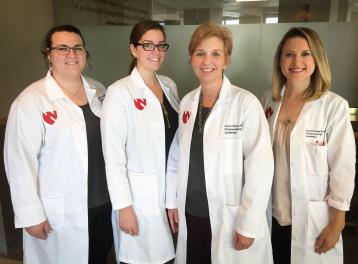
Everyday, we are exposed to environmental noises (i.e. television, traffic), which are typically at safe levels that won’t damage our hearing.
However, with today’s technology, we are more exposed to harmful noise levels, even at an early age. In fact, the World Health Organization has estimated that 1.1 billion youth are at risk of developing a noise-induced hearing loss. Specifically, ear buds connected to personal devices, such as smartphones and tablets, have been known to cause permanent hearing loss. These devices enable the user to experience volumes at a much higher level than what is recommended. In addition, ear buds allow a more direct sound due to their proximity to the eardrum.

Noise levels over 85 dB (decibels) are potentially harmful to the inner ear, which houses our permanent hearing structures. Noise-induced hearing loss is dependent on two things: volume and duration. The louder the volume, the less amount of time a person should be exposed to it. For example, a person exposed to one shotgun blast (165 dB) is more at risk of permanent hearing loss than a person exposed to a lawn mower (90 dB) for 30 minutes. It is critical for your hearing health to always wear hearing protection when you are exposed to sound levels higher than 85 dB. To determine how loud noises are around you, there are free sound-level meter apps available on smartphones that will determine dB levels.
A recent study from Boston University show that ear buds can reach a maximum of 140 dB which can cause a hearing loss after just a few minutes. The general rule of thumb with ear buds is to keep the use to a maximum of 60 minutes at 60 percent of the volume output. This is known as the 60/60 rule.
In addition, the volume is too loud if the person standing next to you can hear your music or if you can’t hear them talking from a few feet away.
Please call us at 800.922.0000 to make a hearing test appointment or to obtain custom hearing protection. We are located on the third floor of the Laurtizen Outpatient Center and second floor at Nebraska Medicine - Village Pointe.

